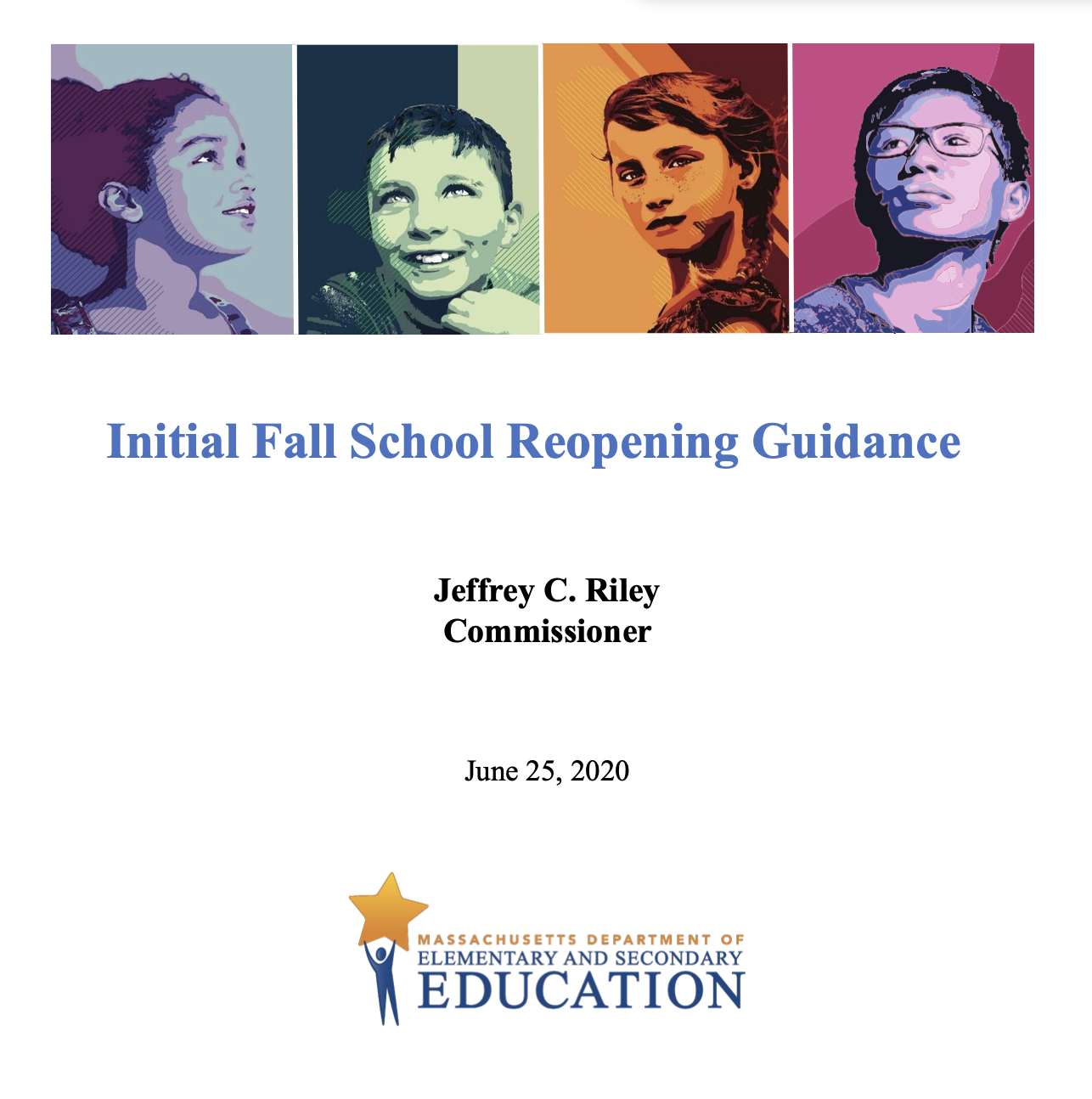Photo: The cover page of the Massachusetts DESE guide to reopening public schools in September.
With guidance from the state now in hand, the Belmont School District is beginning in earnest to put together a blueprint for opening the school year in less than two months.
But no one should believe this will be an easy process in a world dominated by COVID-19.
“This will be unlike any September that school systems have ever faced with trying to open school under a pandemic,” said School Superintendent John Phelan at a virtual Zoom meeting of the Belmont School Committee recently.
Belmont joins districts and systems across the country determine the optimum playbook to follow in the coming school year, as “families are ready to fall into that familiar ‘back to school’ routine where parents go back to work and students are in front of teaching and developing their own social emotional growth and development,” said Phelan.
The district with guidance from the state’s Department of Elementary and Secondary Education (DESE) is currently creating three learning options for educating students in the 2020-1 school year:
- a traditional in-school model,
- the hybrid system which students participate both in class and learn from home, and
- an on-line remote setup similar to the final weeks of the previous school year.
For Phelan, it doesn’t appear Belmont will be picking one option and sticking with it for for the 2020-1 school year.
“It is our potential expectation that next school year we could run the range of having all three of those option be put in play,” said Phelan, attempting to service the district’s pupils well “but also with safety in mind.”
One of the first things principals, educators and staff are doing during this feasibility phase is measuring every available inch of space in the district’s six schools to determine how many students can be safely taught in each building which will decide which option(s) the district will use to educate its approximate 5,000 students beginning Sept. 2.
“We will set up a schedule where we could try to limit contact between students,” said Phelan as the schools prioritize in-person learning.
The answer is far from certain. “Can it be done with existing staff, do we need more space, will extra buses be needed, can students pass safely between classes, where will lunch take place?”
“Are our class sizes just too big with 26 students in a classroom and still keep the minimum separation in social distancing?” said Phelan.
As the traditional opening is being tested, the district will also provide a more detailed blueprint on a hybrid option with a remote learning portion.
After the three models are completed in the next weeks, the district will return to the state “the data with our assessment” of the options, showing DESE the challenges and pointing out the resources the schools will need to mitigate those challenges” as well as demonstrating the situations that can’t be resolved.
An example is that a teacher with 29-33 students can not run a class under the regulations imposed by the state. “[the class] would need to be split up and a teacher brought in. if not that’s an un-achievable challenge,” said Phelan.
The Superintendent revealed that the state said ‘out loud’ there could be dollars for each district to find added classroom space and to purchase equipment so each student can be equip with computer for hybrid or remote learning.
But Phelan said he found it “concerning” that funds can not be used to add personnel to assist in educating students.








Leave a Review or Comment